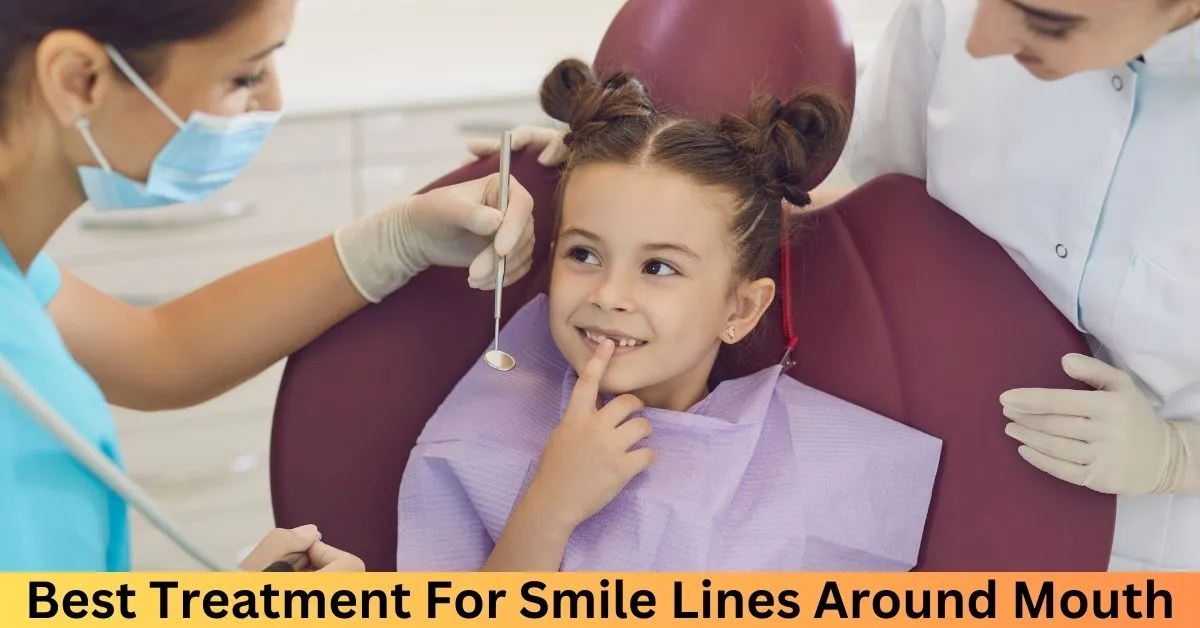Fillers are a popular cosmetic procedure used to reduce the appearance of smile lines, also known as nasolabial folds. These lines run from the sides of the nose to the corners of the mouth and can become deeper with age due to a loss of collagen and elastin in the skin.
There are several different types of fillers available, but hyaluronic acid (HA) fillers are the most commonly used for smile lines. HA is a naturally occurring substance in the skin that helps to attract and retain moisture. HA fillers come in a variety of thicknesses and can be injected into different depths of the skin to achieve the desired results.
Other types of fillers that can be used for smile lines include:
- Calcium hydroxylapatite (CaHA) fillers are made from a mineral that is found in bones. CaHA fillers are thicker than HA fillers and are more effective for treating deeper wrinkles.
- Polylactic acid (PLLA) fillers are made from a synthetic material that stimulates the body’s production of collagen. PLLA fillers are the most long-lasting type of filler, but they can also take longer to see results.
The best type of filler for you will depend on your individual needs and goals. It is important to consult with a board-certified dermatologist or plastic surgeon to discuss your options and determine which type of filler is right for you.
Here are some things to consider when choosing a filler for smile lines:
- The severity of your wrinkles. If your smile lines are mild, you may be a good candidate for a thinner HA filler. If your smile lines are deeper, you may need a thicker filler or a different type of filler altogether.
- Your desired results. Do you want to simply soften the appearance of your smile lines, or do you want to eliminate them?
- Your budget. Fillers can range in price from a few hundred dollars to a few thousand dollars.
Once you have chosen a type of filler, the next step is to find a qualified injector. It is important to choose an injector who has experience treating smile lines and who is familiar with the type of filler you are using.
The injection process itself is usually quick and relatively painless. Most people experience some minor bruising and swelling after the injection, but these side effects usually subside within a few days.
The results of filler treatment for smile lines can last for 6 months to 2 years, depending on the type of filler used and your skin type.
Contents
- 1 How long do fillers last for smile lines?
- 1.0.1 The longevity of fillers for smile lines can vary depending on a few factors, but generally, they last in the range of 6 months to 24 months. Here’s a breakdown:
- 1.0.2 Average duration:
- 1.0.3 Factors that can affect duration:
- 1.0.4 Maintaining results:
- 1.0.5 To prolong the effects of your smile line fillers, you can:
- 1.0.6 The best way to get a specific estimate for your filler duration is to consult with a qualified injector. They can assess your factors and recommend the most suitable filler type and treatment plan for achieving and maintaining your desired results.
- 2 What filler is best for smile lines?
- 3 Can smile line filler go wrong?
- 4 How much does a smile line filler cost?
- 5 How painful is smile line filler?
- 6 Is filler or Botox better for smile lines?
How long do fillers last for smile lines?
The longevity of fillers for smile lines can vary depending on a few factors, but generally, they last in the range of 6 months to 24 months. Here’s a breakdown:
Average duration:
- 6-12 months: This is the most common range for hyaluronic acid (HA) fillers, which are the most popular type for smile lines.
- 12-18 months: Some longer-lasting HA fillers like Juvéderm Vollure® or Restylane Lyft® can fall within this timeframe.
- 18-24 months: Poly-L-lactic acid (PLLA) fillers, which stimulate collagen production, offer the longest duration but results take longer to appear.
Factors that can affect duration:
- Type of filler: Different fillers have different lifespans based on their properties and how the body metabolizes them.
- Individual factors: Your age, metabolism, lifestyle (sun exposure, smoking), and skin type can influence how quickly the filler breaks down.
- Injection technique: The skill and experience of the injector can affect how accurately the filler is placed and how well it integrates with your tissues.
Maintaining results:
To prolong the effects of your smile line fillers, you can:
- Follow your injector’s recommendations: They will advise on specific aftercare and any follow-up appointments needed.
- Protect your skin: Use sunscreen regularly and avoid excessive sun exposure.
- Maintain a healthy lifestyle: Diet and exercise can contribute to skin health and longevity of results.
- Consider touch-up treatments: Once you start noticing fading, schedule maintenance injections to maintain your desired look.
The best way to get a specific estimate for your filler duration is to consult with a qualified injector. They can assess your factors and recommend the most suitable filler type and treatment plan for achieving and maintaining your desired results.
What filler is best for smile lines?
There isn’t a single “best” filler for smile lines, as the ideal choice depends on various factors like your skin type, wrinkle depth, desired outcome, and budget. However, here’s a breakdown of popular options to help you decide:
Hyaluronic Acid (HA) Fillers:
- Most Popular: These are commonly used for smile lines due to their safety, natural-looking results, and reversibility with hyaluronidase.
- Types: Brands like Juvederm, Restylane, and Belotero offer HA fillers in different viscosities for adjusting to wrinkle depth and area treated.
- Pros: Biocompatible, minimal downtime, natural volume restoration, temporary (6-18 months).
- Cons: May require repeat injections, potential swelling/bruising, costlier than some options.
Other Fillers:
- Calcium hydroxylapatite (CaHA): Thicker consistency, suitable for deeper wrinkles, longer-lasting (up to 2 years).
- Poly-L-lactic acid (PLLA): Stimulates collagen production, offers gradual improvement over time, long-lasting (up to 2 years).
- Fat grafting: Permanent solution, harvested fat injected into smile lines, requires surgery and longer recovery.
Additional Points:
- Botox: Not a filler, but can relax muscles contributing to smile lines, often combined with fillers for optimal results.
- Skin Boosters: Like Profhilo, can improve skin texture and hydration, supporting filler effects.
- Consultation: Crucial for assessing your needs and recommending the best filler type and amount.
It’s important to remember that cosmetic procedures like fillers require a qualified and experienced professional. Please consult a licensed dermatologist or aesthetician for a personalized assessment and treatment plan.
Can smile line filler go wrong?
A smile line filler can go wrong, just like any medical procedure. While the risks are generally low when performed by a qualified professional, it’s important to be aware of potential complications. Here are some things to consider:
Common Side Effects:
- Bruising and swelling: This is the most common side effect and usually resolves within a few days.
- Lumpiness or bumps: Filler can sometimes bunch up, but typically smooths out within a week or two.
- Asymmetry: Slight asymmetry is possible, but a skilled practitioner can minimize this.
- Infection: Rare, but can occur if proper hygiene protocols aren’t followed.
More Serious Risks:
- Allergic reaction: Although uncommon, allergic reactions to the filler material can occur.
- Vascular occlusion: If filler accidentally blocks a blood vessel, it can lead to tissue death, blindness, or stroke (extremely rare).
- Overfilling: Excessively filling the smile lines can create an unnatural appearance.
- Migration: Filler can migrate to unintended areas, causing unwanted fullness.
Factors that Increase the Risk of Complications:
- Choosing an inexperienced or unlicensed practitioner: This is the biggest risk factor. Always ensure your provider is qualified and has a good reputation.
- Pre-existing medical conditions: Certain conditions, like bleeding disorders or autoimmune diseases, can increase the risk of complications.
- Using the wrong type of filler: Different fillers have different properties and are suited for different areas. Choosing the wrong one can lead to problems.
How to Minimize the Risk:
- Choose a reputable and experienced practitioner: This is the most important step.
- Discuss your medical history and any allergies with your practitioner.
- Ask about the specific filler being used and its potential risks.
- Follow your practitioner’s pre- and post-treatment instructions carefully.
If you experience any concerning side effects after the smile line filler, contact your practitioner immediately.
Remember, while smile line filler can be a safe and effective way to reduce wrinkles, it’s important to be informed about the potential risks and choose your provider carefully.
How much does a smile line filler cost?
The cost of smile line filler can vary greatly depending on several factors, including:
- Location: Prices tend to be higher in major cities compared to smaller towns.
- Practitioner’s experience and qualifications: More experienced and renowned practitioners typically charge more.
- Type of filler used: Different fillers have varying costs based on their brand, viscosity, and longevity.
- Amount of filler needed: Deeper wrinkles or larger areas will require more filler, increasing the cost.
- A number of injections: Some cases might require multiple injections for optimal results, impacting the total price.
Here’s a general range to give you an idea:
- Hyaluronic acid fillers: $600-$1,500 per syringe
- Calcium hydroxylapatite fillers: $700-$2,000 per syringe
- Poly-L-lactic acid fillers: $800-$2,500 per syringe
- Fat grafting: $3,000-$8,000+ (surgical procedure with additional costs)
Additional costs to consider:
- Consultation fee (may be waived if you proceed with the treatment)
- Anesthesia fee (if used)
- Pain medication
- Follow-up appointments
It’s important to remember that these are just estimates, and the actual cost for your specific case will depend on the factors mentioned above. Always consult with a qualified practitioner for a personalized quote.
Here are some tips for finding affordable smile line filler treatments:
- Shop around: Get quotes from different practitioners in your area.
- Consider deals and promotions: Some clinics offer discounts or packages for multiple treatments.
- Look for board-certified practitioners: Their experience might justify a slightly higher price, but it also ensures quality and safety.
- Focus on qualifications, not just price: Choosing the cheapest option might not be the best decision in the long run.
Remember, your safety and satisfaction should be your top priorities when considering smile line fillers. Don’t hesitate to ask questions and compare options before making a decision.
How painful is smile line filler?
The painfulness of smile line filler is generally not considered severe and varies depending on individual sensitivity and the technique used. Most people describe it as a mild to moderate discomfort, similar to a slight pinch or prick. Here’s a breakdown:
Factors influencing pain:
- Individual sensitivity: Some people have naturally higher pain thresholds than others.
- Type of filler: Hyaluronic acid (HA) fillers, the most common type for smile lines, often contain lidocaine, a local anesthetic, to minimize discomfort. Other fillers might not have this built-in numbing agent.
- Injection technique: A skilled injector can minimize pain by using a fine needle and injecting slowly and precisely.
- Topical numbing cream: Many injectors apply a topical numbing cream before the injections to further reduce discomfort.
General pain experience:
- Initial pinch: You might feel a slight pinch as the needle enters the skin.
- Pressure: Some people experience a feeling of pressure during the injection process.
- Stinging: You might feel a brief stinging sensation as the filler is injected.
- Afterward: Some tenderness or mild swelling might occur after the injections, but this usually subsides within a few days.
Pain management options:
- Topical numbing cream: As mentioned earlier, many injectors use this to numb the area before the injections.
- Ice pack: Applying an ice pack to the treated area after the injections can help reduce swelling and discomfort.
- Over-the-counter pain medication: Taking over-the-counter pain medication like ibuprofen or acetaminophen can help manage any remaining discomfort.
Remember:
- Communication is key. Discuss your pain concerns with your injector beforehand. They can answer your questions and address any anxiety you might have.
- Focus on the results. While there might be some temporary discomfort, the potential benefits of reducing the appearance of smile lines outweigh the pain for most people.
Overall:
Smile line filler is generally a well-tolerated procedure with minimal pain. With proper preparation and pain management techniques, most people find the experience manageable and are satisfied with the results.
Is filler or Botox better for smile lines?
Deciding between filler and Botox for smile lines can be tricky, as both have their advantages and disadvantages depending on your specific needs and goals. Here’s a breakdown:
Botox:
Pros:
- Reduces muscle movement: Targets the underlying muscle movement that contributes to smile lines, softening their appearance.
- Prevents deepening: Great for preventative care, helping to stop smile lines from getting worse over time.
- Natural-looking results: Provides a subtle improvement, leaving your face looking like a younger version of itself.
- Temporary: Effects last 3-4 months, allowing you to adjust if needed.
Cons:
- Doesn’t add volume: Won’t fill in lines caused by volume loss or static wrinkles.
- May not erase deep lines: Not as effective for very deep or prominent smile lines.
- Not ideal for all types of smile lines: Primarily targets lines formed by muscle movement, less effective for wrinkles resting on the skin.
Fillers:
Pros:
- Adds volume: Fills in wrinkles and folds, plumping up the area and smoothing out lines.
- Works on all types of lines: Effective for both dynamic (movement-related) and static (resting) wrinkles.
- Longer-lasting results: Effects can last 6-24 months depending on the type of filler.
- Versatile treatment: This can be used to augment other areas of the face like lips or cheeks.
Cons:
- Less natural-looking: Can sometimes appear overdone if not injected carefully.
- Risk of complications: Potential for side effects like bruising, swelling, or lumpiness.
- More expensive: Generally costlier than Botox per treatment.
So, which one is better?
It depends on what you’re trying to achieve:
- If you have mild smile lines formed by muscle movement and want a preventative or subtle approach, Botox could be a good option.
- If you have deeper lines or want to add volume, fillers might be a better choice.
- Ultimately, the best option for you will depend on your individual needs and preferences. A consultation with a qualified dermatologist or cosmetic surgeon can help you determine the best approach for your specific smile lines.
Here are some additional factors to consider:
- Your budget: Both Botox and fillers are investments, but fillers tend to be more expensive per treatment.
- Your desired results: Do you want a subtle improvement or a more dramatic change?
- Your risk tolerance: Fillers have a slightly higher risk of side effects than Botox.
- Your skin type and health: Certain medical conditions or skin conditions might make one treatment more suitable than the other.
I hope this information helps you make an informed decision about whether filler or Botox is right for you! Remember, a personalized consultation with a qualified professional is the best way to get tailored advice for your specific situation.







